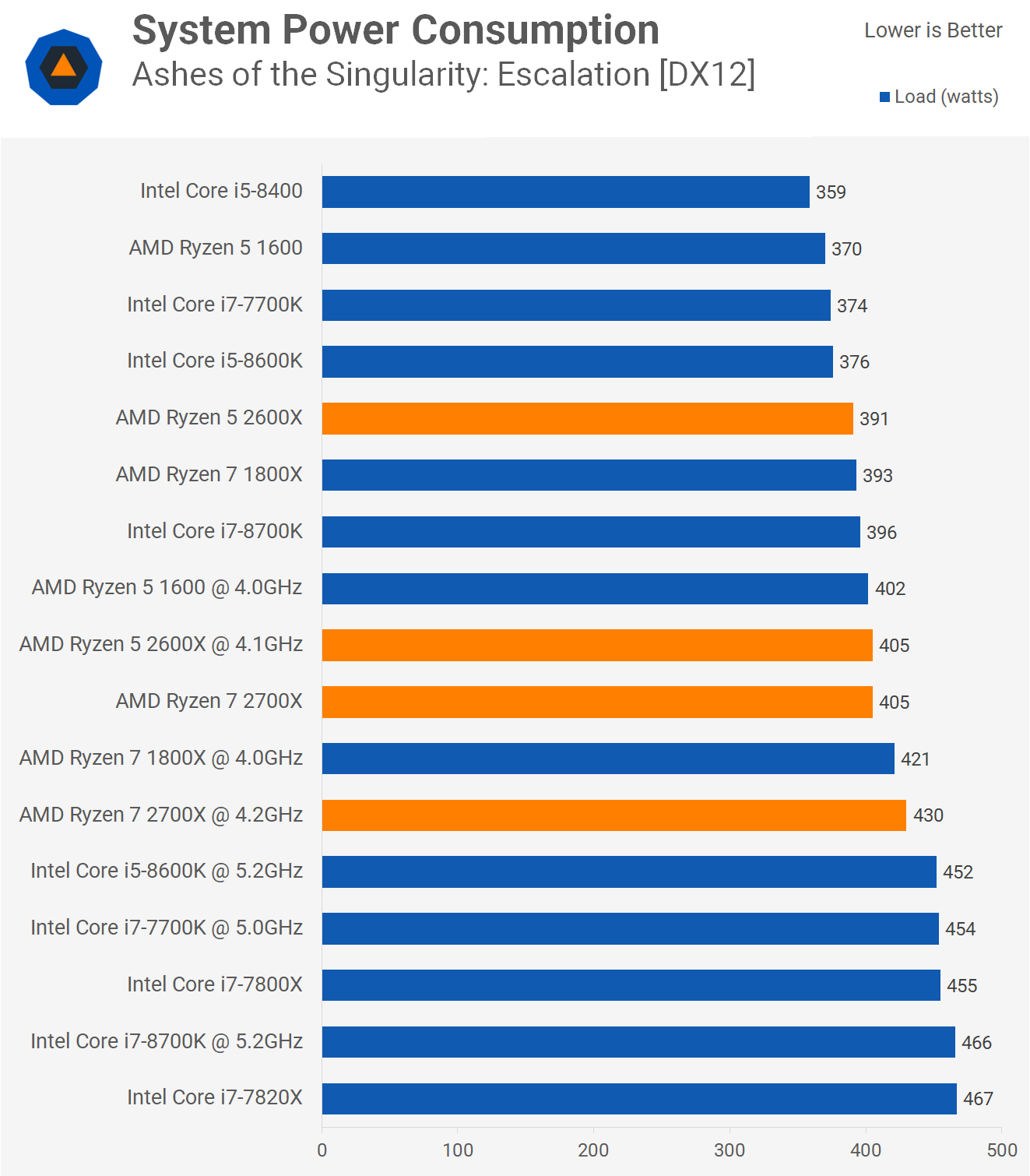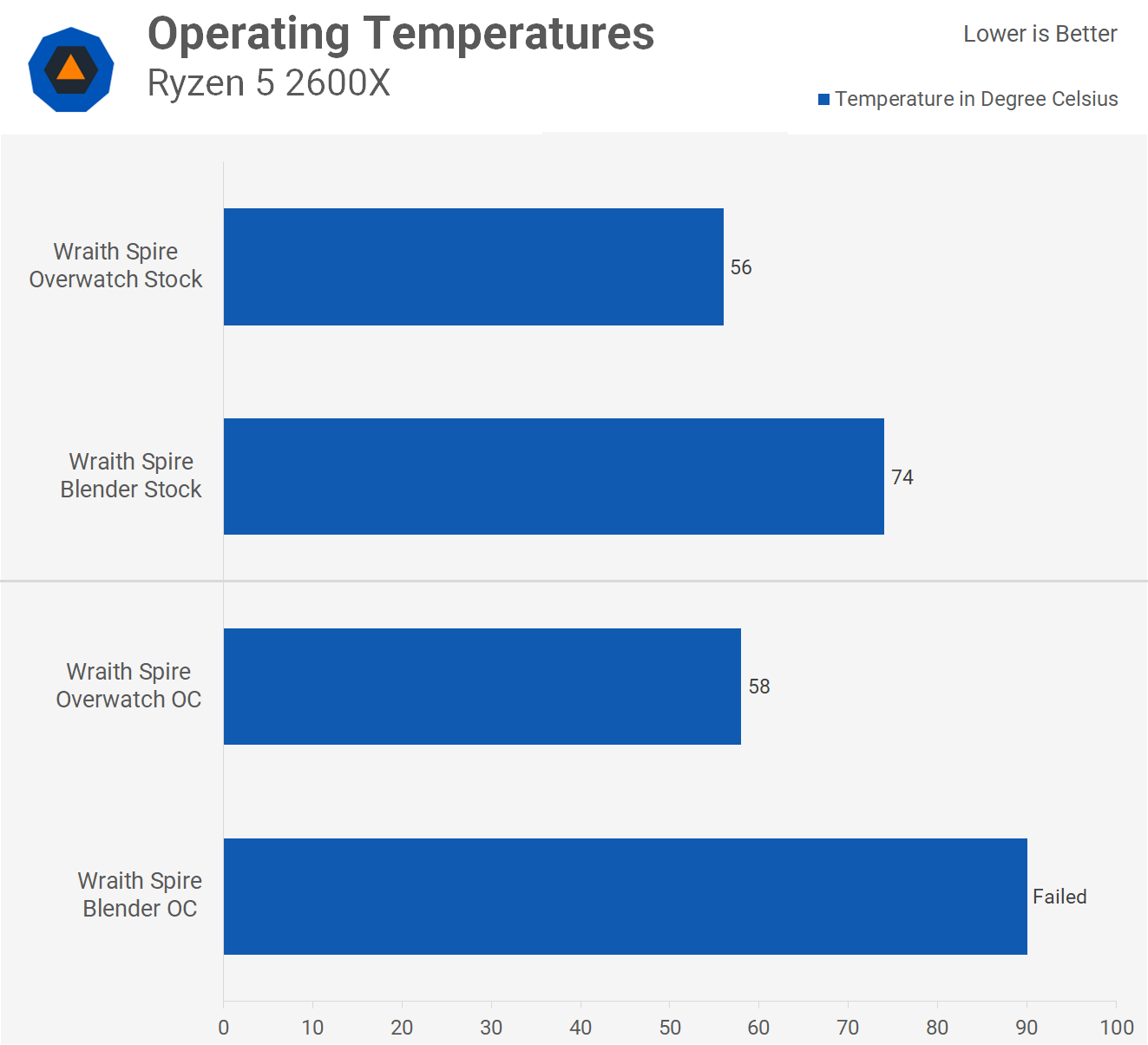AMD Ryzen 7 2700X & Ryzen 5 2600X Review > Power Consumption, Operating Temperatures
Power Consumption, Operating Temperatures
Looking at power consumption when testing with Ashes of the Singularity, nosotros encounter that the 2700X only increases total system consumption by four% when compared to the 2600X, it also only used 2% more than the 8700K. At present the Core i7-8720X looks bad here using 15% more than power than the 2700X but remember it was 14% faster as well, so functioning per watt is really much the same in this championship.

Overclocking only increased the power depict for the 2nd-gen Ryzen CPUs by a small margin, 6% for the 2700X for example. The 8700K saw total system consumption increase by xviii% making it less efficient once overclocked.

The 2700X and 2600X again consumed a similar corporeality of power, this time when testing with Far Weep 5. They were basically on par with the 8700K simply used less power than the Skylake-X parts. So in this title the second-gen Ryzen CPUs were much more than efficient than the 7820X and 7800X.
Overclocking didn't have a huge bear upon on power describe for the second-gen Ryzen CPUs though it did run across the Kaby Lake and Coffee Lake CPUs consume loads more than power.

For our Blender workload the 2600X used roughly the same amount of power equally the 8700K while the 2700X was on par with the 7800X. Overclocked, the 2nd-gen Ryzen CPUs consumed around twenty% more power, which is a lot meliorate than the almost 60% increase seen when overclocking the 8700K.

The 2700X pushed arrangement draw 9% higher than the 1800X and it only reduced the encode time past iv%. Interestingly though, the 2600X consumed but 10% more power than the 1600 but was able to reduce the encode time by 16%. In terms of performance per watt, the second-gen Ryzen CPUs were comparable to the Skylake-Ten 7820X and 7800X in this title.
Operating Temperatures

The Ryzen 5 2600X performed had very reasonable temperatures out of the box using the provided Wraith Spire libation. While gaming you can wait temperatures to hover between fifty and 60 degrees, assuming y'all have a well ventilated case. Information technology's worth noting that the fan was serenity throughout these tests and overclocking had little impact on temperatures when gaming. However, we did see a massive increment for the heavy Blender workload and after an hour the CPU peaked at 90 degrees.

The 2700X gets the fancy new Wraith Prism cooler and while more substantial than the Spire, temperatures climbed college when paired with the eight-core CPU. Out of the box, the Prism allowed the 2700X to hit 64 degrees in our game test and 92 degrees for the Blender stress test. Needless to say, the Prism couldn't handle our overclock. Gaming wasn't too bad but the max load examination with Blender saw the thermal limits reached and often acquired the overclock to neglect.
Strapping on the Corsair H150i Pro solved this result and reduced the Blender load temp downwardly to 81 degrees which is reasonable. Gaming temperatures now dropped below 60 degrees likewise. So overclockers will desire to upgrade the cooler and I'll explore more cost effective options in a time to come article.
Source: https://www.techspot.com/review/1613-amd-ryzen-2700x-2600x/page4.html
Posted by: fultzbuts1992.blogspot.com


0 Response to "AMD Ryzen 7 2700X & Ryzen 5 2600X Review > Power Consumption, Operating Temperatures"
Post a Comment